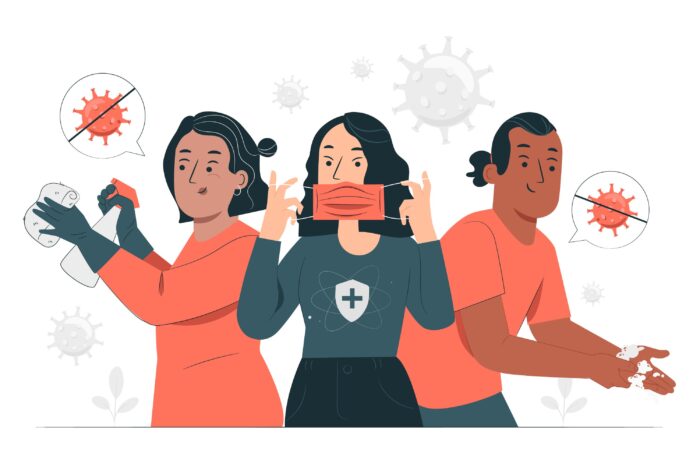In early December, Cal/OSHA doubled down on workplace safety by passing the COVID-19 Emergency Temporary Standards requirements, the purpose of which is to keep our workplaces—and employees—as safe and illness-free as possible.
[Update: As of Jan. 12, 2021, CalChamber is requesting further guidance and clarity from Cal/OSHA regarding the ETS. Read the update here.]
What Is the Scope of the Standards?
Employees working 100 percent at home and workplaces with only one employee who doesn’t come in contact with other people aren’t covered by the standards. Otherwise, they apply to all employers, places of employment, and employees not already covered by the Aerosol Transmissible Diseases regulation.
The standards are currently effective, and expire when the COVID-19 emergency ends.
What Does Compliance Mean for Employers?
The Standards can be summarized as a requirement that employers develop and implement a written COVID-19 Prevention Program for staff that covers:
- Identification, evaluation, and correction of workplace COVID-19 hazards
- Engineering and administrative controls to reduce transmission risk
- Communication to staff about prevention procedures
- Staff training in response to COVID-19
- Physical distancing of at least six feet unless impossible
- Provision of personal protective equipment where needed to reduce transmission risk
- Use of face coverings
- Investigation of and response procedures to COVID-19 cases in the workplace
- Testing for employees exposed to COVID-19 in the workplace
- Regular testing for staff in exposed areas should multiple infections or outbreak occur
- Workplace exclusion of sick and exposed employees until the infection risk is passed.
- Record maintenance of COVID-19 cases
- Reporting of serious illnesses and multiple cases to Cal/OSHA and local health departments

In most cases, a written Illness and Injury Prevention Program (IIPP) should already exist, and the Standards can be added to it. The IIPP already requires identification and addressing of hazards, use of face coverings, and physical distancing be included, and employers should not need to develop these plans from scratch.
I Have So Many Questions
We don’t see how you couldn’t.
Summaries aside, the Standards are substantial, and even our experienced HR professionals are digging in to learn how the new rules apply across the breadth of our clientele.
For you, we have some targeted recommended reading that will help you get your mind around what you need to take care of for your business.
The DIR has a really excellent FAQ page here, while Cal/OSHA offers this one.
The DIR’s FAQ is thorough; Cal/OSHA’s is a one-page PDF that breaks down the most important actions for employers.
Both FAQs have links to the law itself, and help define what is meant by terms such as “outbreak” and “exposed.”
They both also expand on basic requirements, detailing, for example, what identification, evaluation, and correction of workplace COVID-19 hazards means, or what administrative controls are, within the context of the Emergency Standards. We recommend you read both FAQs for a rounded picture of the requirements.
You may also find the Model COVID-19 Prevention Program provided by Cal/OSHA useful when developing these materials.
We will continue to stay informed and tuned in to any other legislation affecting employers. We are here to help!


